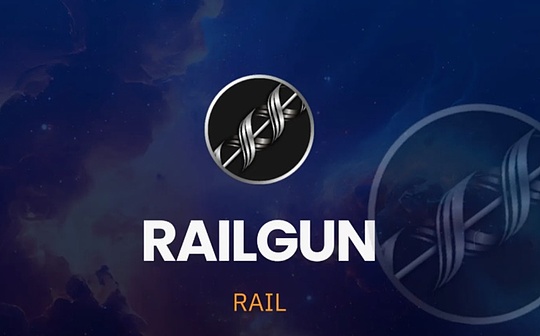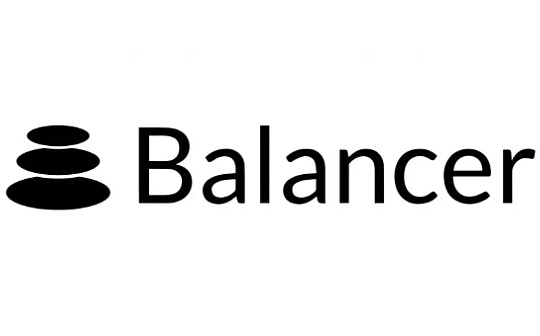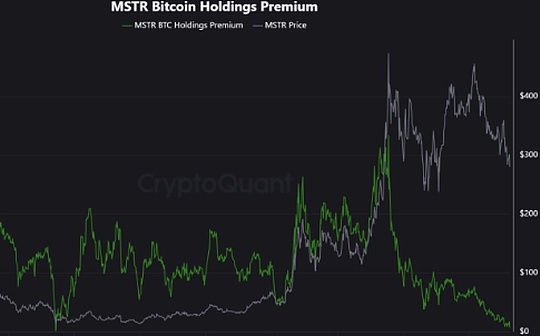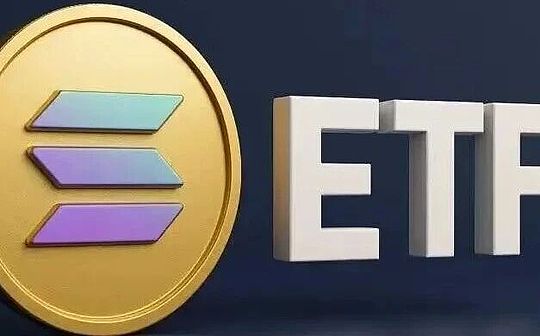
author:TANAY VED & AMP; Matías Andrade Source: Coin Metrics Translation: Shan Ouba, Bit Chain Vision Realm
Key points:
-
Ethereum’s pledged ecosystem has gone through a long road, and has evolved from the initial POW to POS that appeared with The Merge.Essence
-
About 33.5 million ETH, worth about $ 115 billion, was pledged on the Ethereum consensus layer, accounting for 27.8%of ETH’s total supply.
-
At present, 1.05 million active authenticants have participated in the network, and will increase by 15%since 2024.
Brief background of Ethereum pledged
Praising is the core of the blockchain of equity (POS) such as Ethereum.As Ethereum transitions from the workload certificate (POW) network to the equity certificate (POS) in 2022, the participants now need to be deposited at least 32 ETH as a mortgage to promise “pledge” in order to become active on the Internet to become active on the Internet.Verification -the core economic participant of the system.
Praising is the basis for the network to reach a consensus, that is, the process of proposal, verification, and proof of the new block of the network participants (verification). The value of pledged assets helps the economic security of the network.The pledge of verifications can be used as economic incentives, prompting participants to act with the best interests of the Internet.On the one hand, if the verifier performs his duties honestly, he will receive Ethereum rewards, otherwise it will face the risk of punishing or cutting pledge due to malicious acts.
introduce
Given that the spot Ethereum ETF will be on July 23Go onlineAnd the dense clouds around the pledge, we believe that the basic role of solving pledge in the Ethereum network is very important.In this period of research report, we revealed the pledge journey of Ethereum so far, and learned how the pledge ecosystem worth $ 115 billion is worth the appearance, development, and its development direction.
From the transition through The Merge to POS, to the withdrawal through Shapella, the emergence of liquidity pledge and re -pledge, and the recently launched spot Ethereum ETF ——The pledge is undoubtedly one of the core pillars of the Ethereum route map, which is essential to the entire ecosystem.
End of the POW era (2015 -2022)
Ethereum’s creation block was recorded on July 30, 2015.Since thenFor more than seven years, the chainProof of work (POW)Consensus mechanism protection.Similar to the operation method of today’s Bitcoin blockchain, this requires a large number of hardware clusters, including the general processing unit (GPU) and the final dedicated integrated circuit (ASIC). They consume computing resources to findNonce’s hash valueEssenceFind a valid NONCE mining union to broadcast new blocks into the chain, and get rewards in the form of block rewards (issued ETH) and the transaction costs contained in the block.
>
However, with the increase in network difficulties (the calculation workload required for random numbers), the energy resources consumed by miners have become increasing.As early as 2016, vItalik Buterin advocates the turn of EthereumCertificate of Equity (POS)In order to solve the bottleneck problems such as energy consumption, scalability, and network sustainability, prepare for the future growth of Ethereum.This marks Ethereum miner Located inThe era of verifications is overEssence
Introduction to the Lord (2020)
In October 2020, the pledge deposit contract was deployed at the Ethereum execution level.This is the portal of the participants pledged ETH. Whether it is self -custody infrastructure (pledged separately), or through pledge service providers, LIDO and Rocketpool such as Figments, or the final centralized exchange pledge plan.
>
Source: Coin Metrics Network Data Pro
At present, the Ethereum consensus layer has 33.5 million ETH (worth about $ 115 billion) and 1.05 million active authenticants participate in the network.This accounts for 27.8%of ETH’s total supply, also known as the “pledge rate”.Due to the differences between the implementation of the POS blockchain, there may be a large difference in the pledge rate.
December 2020,Beaconic chain(Also known as the consensus layer), it was launched as a parallel blockchain of Ethereum main network and implemented through EIP-3675.It marks the first step from the transition from the workload (POW) to the equity certificate (POS).The chain is specially designed to handle the POS process and manage the balance of verification, the balance of responsibilities (proof and proposed new blocks) and incentive measures (rewards and punishments) to reach a consensus.This lays the foundation for the ultimate merger with the main network. The main network carries a large number of smart contracts and DAPPs supported by the Ethereum virtual machine (EVM).
Merger: transition to POS (2022 to the present)
The integration of “execution layers” (also known as the main network) and “consensus layer” (also known as the benchmark chain) of Ethereum (also known as the main network) and “consensus layer) are now widely called” mergers “.This means that Ethereum officially shifted to the engine’s engine as a block production engine.
>
Source: MAPPING OUT The MERGE
Miners are no longer a means to produce effective blocks.On the contrary, in the equity certificate, the verified as the role of this role is now responsible for proposing the block and handling the effectiveness of all transactions.As the return of these responsibilities, they won the reward through the newly distributed ETH, the transaction fee (as a “priority tip”) and the maximum extraction value (MEV).
As we stated in the Reporting “Planning Merge”, we turned to POS to the verifications and the currency economy of POS to Ethereum.Under POW, the daily circulation of Ethereum is about 13.5K ETH, and the annual inflation rate exceeds 4%.However, with the changes in the EIP-1559, the basic cost destruction mechanism and priority cost (these expenses will be assigned to the verification). ETH’s daily circulation is closer to 0, and the current annual inflation rate is 0.67%.
The rise of liquidity escort derivatives
At that time, the POS system in Ethereum had some bottlenecks, which prompted the rise of equity pool providers and liquidity equity tokens (LST).Some of these problems include:
-
Unable to extract pledge: The pledge is one -way operation within a few months.ETH pledged can only flow from the execution level (where the deposit contract is located) to the consensus layer and cannot be redeemed.
-
Insufficient liquidity of pledged ETH:Unable to extract the pledged ETH lack of liquidity, which hinders any further use.
-
Capital and operation requirements:The minimum capital requirement is 32 ETH, coupled with the needs of operation and maintenance of Ethereum node software (including execution and consensus client), set up an enlistment obstacle for many potential interests, restricting people’s extensive participation in the network verification process processEssence
Therefore, multiple pool solutions such as LIDO, Coinbase, and Rocketpool came into being, and used this opportunity to use this favorable chart.They allow users to participate in any denomination ETH, and manage node operations by accumulating deposits between users to create verifications on the benchmark chain.Users have obtained a mobile receipt token (called mobile pledged token) representing the underlying pledged assets. These tokens can get pledge rewards without “locking”.In the end, this reduced the entry threshold for pledge, promoted the growth of the industry, and allowed greater participants to protect the Ethereum network.
>
Source: Coin Metrics Staking instrument board
At present, 9.8 million ETH (worth about $ 32 billion) pledge through LIDO.This accounts for 29% of all pledged ETH market share, and is also known as “LIDO dominant position”.Eth over a single physical pledge exceeding the high threshold (33%) may bring centralized risks.This prompts people to manage decentralized verifications and node operators through innovation such as DAO governance or DVT.
In addition to making participation easier, the equity pool has also promoted the practicality of liquidity pledged token (LST) in a wider chain ecosystem.The LST (such as STETH and WSTTH (Packal Picunde) issued by LIDO) has produced significant network effects. It is widely used in the application of decentralized finance (DEFI).The liquidity of the exchanges (DEX).
>
Source: Coin Metrics Atlas
At present, more than 2 million ETH (worth about $ 10 billion) is used as a mortgage support loan for the DEFI borrowing agreement such as AAVE V3 and Spark.LST is also a popular liquidity reserves in the economic security of DEX, the second floor, and the re -pledge agreement.
Shapella: A withdrawal function (2023)
2023On April 12, Shanghai and Capella upgraded (calledShapella)The arrival of it closed the loop of the pledged ETH, and finally realized the redemption chain.The verifiedan can now enterandExit the POS system, but to abide by the verificationist queue and the limit of loss (the upper limit of the number of verificationrs that can be activated in each period, currently passedEIP-7514 in Dencun is set to 8To.
>
Source: Coin Metrics Network Data Pro
At present, 4,000 verificationrs are in the pledge and entered the queue, less than 96K in June 2023 and 21k in April this year.
Although the authenticated entry queue may be stable compared with last year, the deposit of the pledged ETH still exceeds the withdrawal amount.sinceShapellaSince the upgrade, 30 million ETH has been stored in the consensus layer, and 17 million ETH has been taken away.The difference between the decrease in the number of verifications in the entry queue may be partially partially attributed to the popularity of liquidity pledge, which leads to the increase in the number of ETHs of the pledged ETH without directly increasing the verification.
>
Source: Coin Metrics Network Data Pro
Re -pledged
With the launch of the main network of Eigenlayer in 2023, the pledge has quickly become one of the fastest -growing vertical industries in the encrypted ecosystem.Although the pledge ETH can protect the Ethereum network, the pledge allows the same pledged assets to use the native pledge ETH or the mobile pledged token (LST) to protect external services based on Ethereum, such as prediction machine network, data availability layer, bridge, bridgeInstrument and other middleware.This innovation helps the emerging agreement to guide security without spending high costs to find its own verification device.
Re -pledge can improve the capital efficiency of pledged ETH and expand the security model of Ethereum to a wider ecosystem.However, it also brings the risk of the liquidity representative (LRT) of management pledge assets and re -pledged assets, which comes from different networks with different risks.Although the field of pledge is still in its infancy, it has expanded from Ethereum to other blockchains, such as Solana, and new entrants such as Symbiotic and Jito have also shown their increasing importances.
Spot Ethereum ETF launched
This makes us closer to today -the spot Ether ETF began to launch last week.Although this is an exciting news for the market, the current structure of Ethereum ETF prevents issuers from participating in pledge activities.This is an opportunity cost for investors. They will give up an additional 3% pledge reward, which is a key component of pledge.
Vermitters get rewards by obtaining ETH distribution, priority prompts and maximum extraction value (MEV), thereby inspiring them to participate in the consensus process, which come from the consensus layer (CL) and execution layer (EL).At present, ETH pledge annual interest rate (APR %) (excluding MEV) is slightly higher than 3 %.Although this may affect investors’ demand for ETFs, the impact on the Ethereum network is quite large, such as:
-
Verifications, pledges, and overall network inflation expectations annual interest rate returns
-
The potential effect on the participation of equity and decentralization of equity
>
Source: Coin Metrics Network Data Pro
Any decision to be included in equity rewards needs to be carefully considered these factors to balance the network security and economic sustainability of the Ethereum ecosystem.
What is the future?
Since “merger”, Ethereum’s pledge ecosystem has made great progress, and its future direction depends on a variety of fusion factors.
In view of the pledge rate of Ethereum exceeds 25%of the total supply and more than one -one -millionth, researchers and communities are considering changing the distribution curve of Ethereum and increasing the maximum effective balance of verifications.These proposals originated from the pledge rate of ETH and the centralized trend of the pledge pool. Incentives tend to liquid the pledged token instead of ordinary ETH.In addition, it is considering increasing the maximum effective balance of the verification person from 32 ETH to the 2048 ETH to control the growth of the index of the authentication set, thereby reducing the overhead of the consensus layer.
>
Source: Coin Metrics Network Data Pro
The growth of liquidity pledge and re -pledge, the emergence of the spot Ethereum ETF, the supervision development of pledge, and the potential changes of the authenticants and the issuance of the issuance dynamics show a complex and interconnected pattern.POS system.







